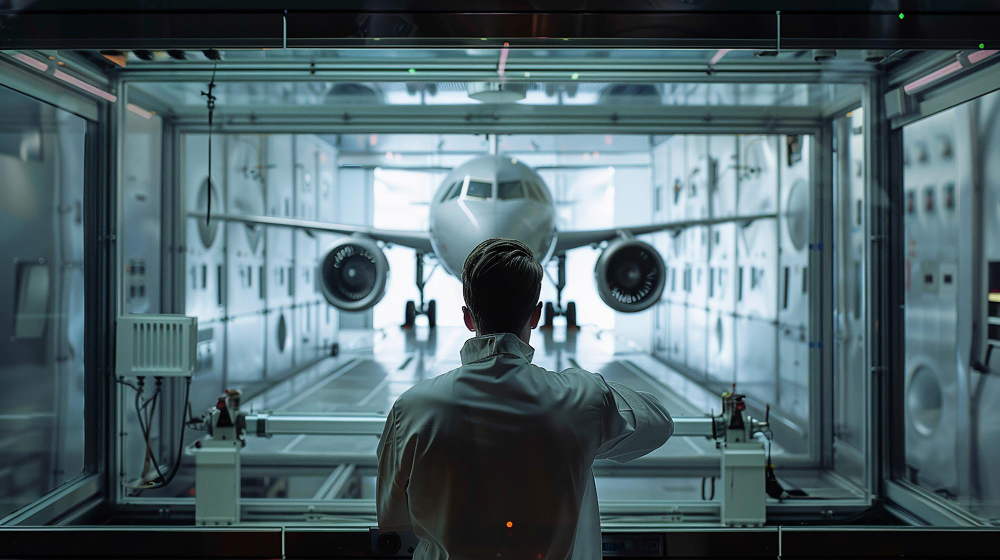Artificial intelligence (AI) is transforming industries around the globe, and aviation is no exception. With the promise of enhanced safety, efficiency, and reliability, AI is revolutionizing the way we think about air travel. This paper delves into the latest advancements in AI-driven aviation safety, exploring current applications and future prospects. One of the key areas where AI is making a significant impact is in simulation and training technologies, including platforms like the Aviator crash game, which play a crucial role in preparing pilots for real-world scenarios.

Post Contents
AI-Powered Predictive Maintenance
Predictive maintenance is one of AI’s most promising applications in aviation safety. Traditional maintenance schedules are often based on fixed intervals, regardless of the actual condition of the aircraft components. AI, however, enables a shift to condition-based maintenance by analyzing vast amounts of data from sensors embedded in aircraft systems. Machine learning algorithms can predict potential failures before they occur, allowing for timely interventions that prevent accidents and reduce downtime. This proactive approach enhances safety and results in significant cost savings for airlines.
Enhancing Pilot Decision-Making
AI is also improving pilot decision-making through advanced decision support systems. These systems analyze real-time data from various sources, including weather conditions, air traffic, and aircraft performance, to provide pilots with actionable insights. For instance, AI can suggest the most efficient flight paths, considering weather patterns and air traffic congestion, thus reducing the likelihood of human error. Moreover, AI can assist in emergency situations by quickly identifying optimal responses to critical failures, thereby enhancing the overall safety of the flight.
Autonomous Flight Technologies
The development of autonomous flight technologies is another exciting frontier in AI-driven aviation safety. While fully autonomous commercial flights are still in the future, significant strides are being made in this direction. AI algorithms are being trained to handle various aspects of flight, from takeoff to landing, with high precision and reliability. These technologies are currently being tested in unmanned aerial vehicles (UAVs) and cargo drones, paving the way for their eventual integration into passenger aircraft. Autonomous systems have the potential to reduce pilot workload, minimize human error, and enhance overall flight safety.
AI in Air Traffic Management
Air traffic management (ATM) is a complex and critical component of aviation safety. AI plays a pivotal role in modernizing ATMs by optimizing airspace management and improving traffic flow. AI-driven systems can process and analyze real-time data from multiple sources to predict traffic patterns, detect potential conflicts, and suggest optimal routing solutions. This results in more efficient use of airspace, reduced delays, and enhanced safety for passengers and crew. Additionally, AI can assist in managing emergency situations by providing air traffic controllers with real-time insights and recommendations.
Simulation and Training Technologies
Simulation and training are essential aspects of aviation safety, and AI is also revolutionizing these areas. Advanced flight simulators powered by AI provide realistic and immersive pilot training environments. These simulators can replicate various scenarios, from routine operations to complex emergencies, allowing pilots to practice and refine their skills in a controlled setting. For example, the Aviator crash game is an innovative training tool that uses AI to simulate various flight conditions and emergency situations, helping pilots develop critical decision-making skills. Integrating aviator game real money into training programs ensures that pilots are well-prepared for any eventuality they might face in the air.
Future Prospects
The future of AI in aviation safety looks incredibly promising, with numerous advancements on the horizon. One area of potential growth is in AI-driven anomaly detection systems. These systems use machine learning algorithms to monitor aircraft performance and continuously detect deviations from operating parameters. By identifying anomalies early, these systems can alert pilots and maintenance crews to potential issues before they escalate into serious problems.
Another exciting prospect is the development of AI-powered virtual co-pilots. These virtual assistants can support human pilots by monitoring flight parameters, managing routine tasks, and providing real-time recommendations. In an emergency, the virtual co-pilot can take over critical functions, ensuring the safety of the flight. This collaboration between human and AI pilots could significantly enhance overall flight safety and efficiency.
AI is also expected to be crucial in integrating emerging technologies such as electric and hybrid-electric aircraft. These new aircraft types present unique challenges and opportunities for safety management. AI can help optimize their performance, manage energy consumption, and ensure safe operation under various conditions. Furthermore, AI-driven systems can facilitate the safe integration of these aircraft into existing airspace, providing seamless and efficient operations.
Ethical and Regulatory Considerations
While the advancements in AI-driven aviation safety are exciting, they also raise important ethical and regulatory considerations. Ensuring the reliability and transparency of AI systems is paramount, as is addressing concerns about data privacy and cybersecurity. Regulatory bodies must establish clear guidelines for developing, testing, and deploying AI technologies in aviation to ensure their safe and effective use.
Additionally, comprehensive training programs are needed to prepare pilots, air traffic controllers, and maintenance crews for integrating AI into their workflows. By fostering a culture of continuous learning and adaptation, the aviation industry can maximize the benefits of AI while mitigating potential risks.
Conclusion
In conclusion, AI is revolutionizing aviation safety through predictive maintenance, enhanced decision-making, autonomous flight technologies, and advanced simulation and training tools. As AI continues to evolve, it promises to bring even more significant innovations to the aviation industry, enhancing safety, efficiency, and reliability. The integration of AI-driven technologies, such as the Aviator crash game, into training programs is just one example of how AI is preparing the industry for a safer and more efficient future. By addressing ethical and regulatory challenges and fostering a culture of innovation, the aviation industry can harness the full potential of AI to ensure the safety of air travel for years to come.